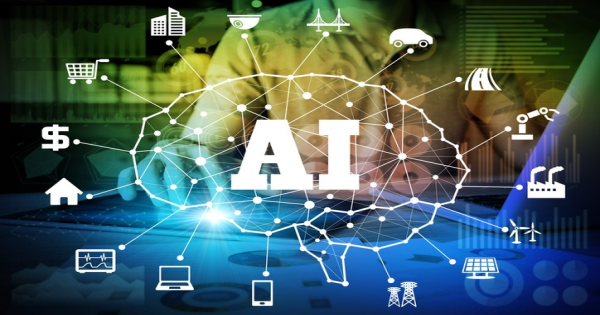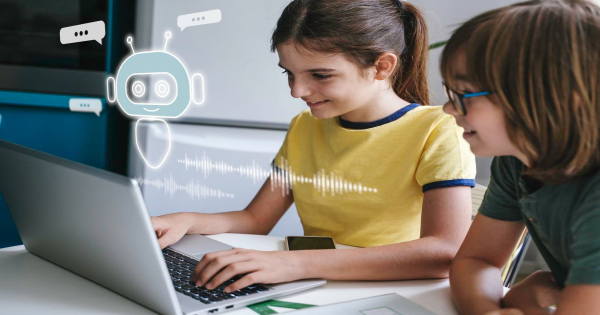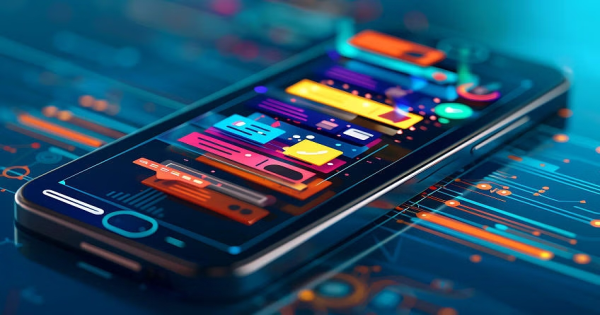In today's fast-paced digital world, technology is transforming almost every aspect of our lives, and education is no exception. From virtual classrooms and AI-powered tools to e-learning platforms and interactive content, technology is redefining how students learn and teachers teach. The integration of digital tools in education is not just a trend—it’s a revolution that is creating more inclusive, engaging, and effective learning environments across the globe.

1. Enhanced Access to Education
One of the most profound impacts of technology on education is improved accessibility. Online learning platforms, mobile apps, and cloud-based resources allow students to learn from anywhere, at any time. This has been especially crucial in remote and underserved areas where traditional educational resources are limited.
Students no longer need to be confined to a physical classroom. Massive Open Online Courses (MOOCs), YouTube tutorials, and e-learning websites offer a wide range of academic and skill-based courses—many of them free. This democratization of knowledge empowers learners of all ages to gain skills and qualifications at their own pace.
2. Interactive and Personalized Learning
Technology enables a more interactive and personalized learning experience. Traditional one-size-fits-all teaching methods are being replaced with adaptive learning systems that tailor content based on the learner’s pace, strengths, and weaknesses.
Artificial Intelligence (AI) tools can track a student’s progress and suggest resources or exercises based on their learning history. Augmented Reality (AR) and Virtual Reality (VR) make abstract concepts easier to grasp through immersive experiences. Imagine exploring the solar system or diving into a human cell with VR—learning becomes not just more effective, but also more enjoyable.
3. Improved Student Engagement
Gamification is another way technology boosts student engagement. Integrating game-like elements such as points, badges, and leaderboards into educational activities can motivate students to participate actively. Apps like Kahoot!, Quizizz, and Duolingo use gamified learning to make education fun and competitive.
In addition, multimedia content like videos, animations, and simulations helps cater to different learning styles—visual, auditory, and kinesthetic. These elements break the monotony of text-based learning and keep students interested and involved.
4. Remote and Hybrid Learning Models
The COVID-19 pandemic accelerated the adoption of remote learning worldwide. Schools and universities shifted to online platforms like Zoom, Google Classroom, and Microsoft Teams almost overnight. Though born out of necessity, this shift proved that learning can continue beyond physical classrooms.
Now, hybrid models that combine face-to-face instruction with online elements are gaining popularity. These flexible approaches provide the best of both worlds and are particularly useful for adult learners and working professionals who need to balance education with other commitments.
5. Data-Driven Teaching and Learning
Technology enables the collection and analysis of data to improve educational outcomes. Learning Management Systems (LMS) such as Moodle and Canvas track attendance, grades, participation, and even behavior patterns. This data helps teachers make informed decisions, identify struggling students early, and adapt their methods accordingly.
Administrators can also use analytics to monitor overall school or institutional performance, allocate resources effectively, and plan for improvements.
6. Teacher Empowerment and Efficiency
Technology is not just reshaping the student experience—it’s also empowering educators. Teachers can now access a wealth of digital resources, including lesson plans, teaching aids, and professional development tools. Automated grading systems and attendance trackers reduce administrative burdens, allowing teachers to focus more on instruction and mentorship.
Moreover, online forums and social media platforms enable educators to collaborate, share insights, and support each other globally. This professional networking improves teaching practices and fosters innovation in education.
7. Inclusive Education for All
Technology plays a pivotal role in making education more inclusive. Assistive technologies such as text-to-speech tools, screen readers, and speech recognition software help students with disabilities participate fully in the learning process. Customizable fonts, contrast settings, and subtitles also enhance accessibility.
For students facing language barriers, translation tools and multilingual resources break down communication hurdles and open the doors to learning in any language.
8. Challenges of Technology in Education
While the benefits are many, integrating technology in education also presents challenges. Not all students have access to devices or reliable internet connections, creating a "digital divide." There's also the issue of screen time, which can affect health and concentration.
Cybersecurity and data privacy are growing concerns, especially when students’ personal information is involved. Additionally, overreliance on technology may sometimes reduce face-to-face social interactions, which are crucial for emotional and social development.
9. The Future of EdTech
The future of education is undoubtedly digital. Emerging technologies like blockchain (for secure academic records), machine learning, and the Internet of Things (IoT) will further personalize learning and streamline educational operations. Artificial Intelligence will play an even bigger role in automating tasks and providing real-time feedback.
Virtual campuses, AI tutors, and intelligent content curation systems are on the horizon. As education evolves, the goal remains the same: to equip learners with the knowledge and skills needed to thrive in a fast-changing world.
Related Articles
-
 Ilmkidunya 26/Jun/2025
Ilmkidunya 26/Jun/2025How to Prepare for Competitive Exams Effectively
-
 Ilmkidunya 10/Jun/2025
Ilmkidunya 10/Jun/2025From Curiosity to Career A Purpose-Driven Journey Through the 4D Growth Framework
-
 Ilmkidunya 10/Jun/2025
Ilmkidunya 10/Jun/2025The Ethics of Artificial Intelligence in Everyday Life
-
 Ilmkidunya 30/May/2025
Ilmkidunya 30/May/2025Over 1 Billion Users: Meta AI Sets New Standard in AI Technology
-
 ilmkidunya 27/May/2025
ilmkidunya 27/May/2025AI in Education – Will Students Stop Doing Homework in the Future?
-
 ilmkidunya 27/May/2025
ilmkidunya 27/May/2025Tech Skills That Will Never Go Out of Demand
-
 Ilmkidunya 12/May/2025
Ilmkidunya 12/May/2025Mind Mapping for Smarter Studying: A Visual Learning Guide
-
 Ilmkidunya 09/May/2025
Ilmkidunya 09/May/2025How Computers Might Solve Problems We Don’t Even Understand Yet
-
 Ilmkidunya 08/May/2025
Ilmkidunya 08/May/2025Solving Compatibility Issues in Cross-Platform App Development
-
 Ilmkidunya 08/May/2025
Ilmkidunya 08/May/2025How Agile Methodologies Solve Project Management Problems
-
 Ilmkidunya 06/May/2025
Ilmkidunya 06/May/2025WhatsApp to Stop Working on These 3 iPhones: What Users Need to Know
-
 Ilmkidunya 25/Apr/2025
Ilmkidunya 25/Apr/2025WhatsApp Introduces Advanced Chat Privacy Feature: A New Era of Messaging Security
-
 Ilmkidunya 25/Apr/2025
Ilmkidunya 25/Apr/2025Smartphones in 2025: What to Expect from Future Mobile Devices
-
 Ilmkidunya 24/Apr/2025
Ilmkidunya 24/Apr/2025OPPO K13: A Game-Changer with 7000mAh Battery and 80W Fast Charging
-
 Ilmkidunya 24/Apr/2025
Ilmkidunya 24/Apr/2025China Introduces Revolutionary 10G Broadband Internet Service
-
 Ilmkidunya 22/Apr/2025
Ilmkidunya 22/Apr/2025YouTube Music Adds 'Consistent Volume' Feature for Smoother Listening
-
 Ilmkidunya 22/Apr/2025
Ilmkidunya 22/Apr/2025Smartphones for All Policy Near Completion: IT Minister Shaza Fatima
-
 Ilmkidunya 18/Apr/2025
Ilmkidunya 18/Apr/2025Scientists Create 1cm Wireless Flying Robot Inspired by Honeybees
-
 Ilmkidunya 17/Apr/2025
Ilmkidunya 17/Apr/2025Signs of Life Detected on Exoplanet K2 B
-
 Ilmkidunya 17/Apr/2025
Ilmkidunya 17/Apr/2025Pakistan Announces Major IT Initiatives to Boost Digital Transformation and Investment

.gif)









.png)


Share Your Comments Questions Here